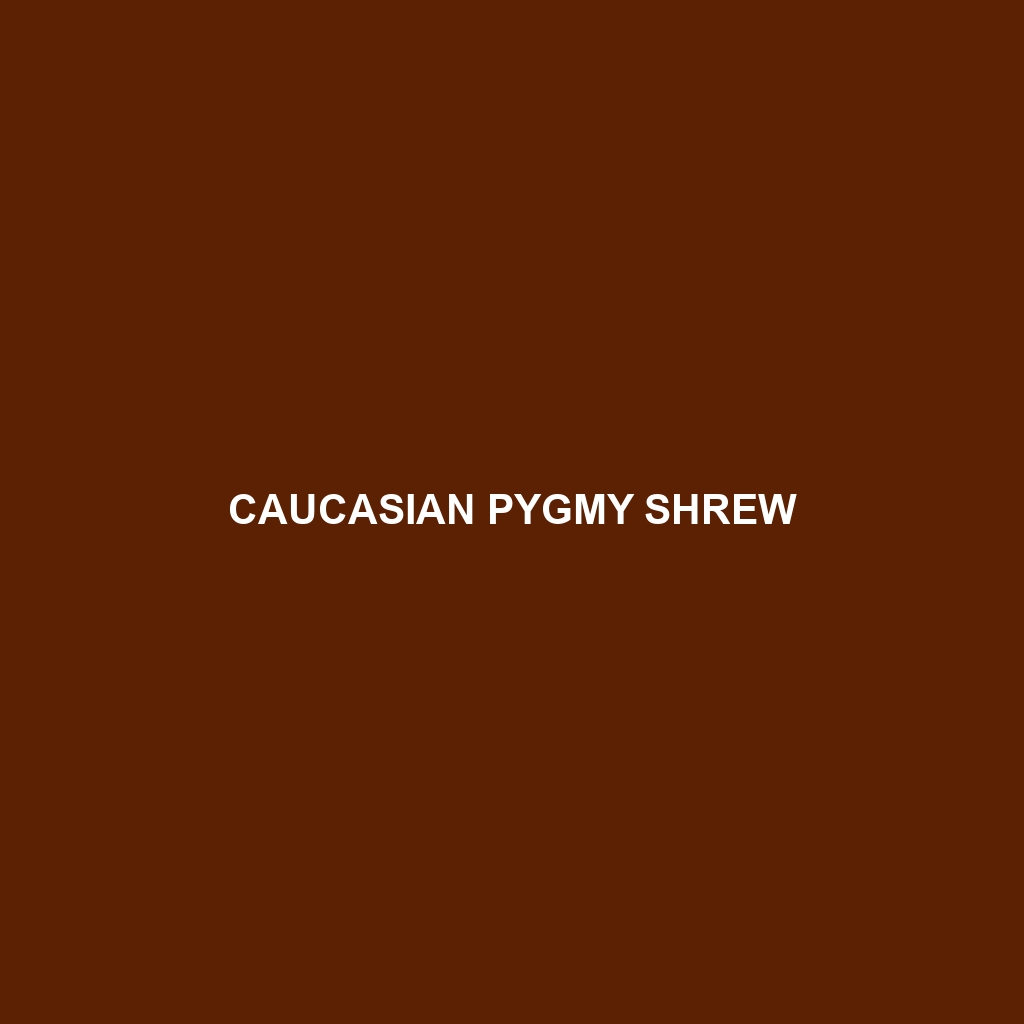Caucasian Pygmy Shrew
Common Name: Caucasian Pygmy Shrew
Scientific Name: Sorex satunini
Habitat
The Caucasian Pygmy Shrew primarily inhabits the mountainous regions of the Caucasus, particularly thriving in moist forested areas, grassy meadows, and scrap vegetation. This small mammal is commonly found in countries such as Georgia, Armenia, and Azerbaijan, favoring environments that provide ample cover and humidity.
Physical Characteristics
The Caucasian Pygmy Shrew is one of the smallest mammals, measuring approximately 6 to 9 centimeters in length. It features a pointed snout, small eyes, and fur that ranges from light brown to gray. Its coloration serves as both camouflage in its natural habitat and aids in thermoregulation. Distinctive characteristics include its tiny, nimble feet and a long, hairless tail, which contribute to its agility in navigating through dense foliage.
Behavior
Caucasian Pygmy Shrews are primarily nocturnal creatures, exhibiting high levels of activity during the night when they forage for food. They are known to be solitary animals that communicate with each other through a series of high-pitched vocalizations. Quick and agile, they often utilize a variety of burrows and crevices for shelter. Their fast-paced movement and erratic behavior often pique the interest of researchers and wildlife enthusiasts alike.
Diet
The diet of the Caucasian Pygmy Shrew consists mainly of invertebrates, particularly insects, spiders, and earthworms. They have a high metabolic rate, necessitating frequent feeding to sustain their energy levels. This small mammal plays a crucial role in controlling insect populations in its ecosystem, making it an integral part of the food web.
Reproduction
Caucasian Pygmy Shrews typically reproduce once a year, with the breeding season occurring between late spring and early summer. A female can give birth to a litter of up to six offspring after a gestation period of about three weeks. The young are born blind and helpless, but they quickly develop and leave the nest to become independent within a few weeks.
Conservation Status
The Caucasian Pygmy Shrew is currently listed as ‘Vulnerable’ due to habitat loss and fragmentation resulting from agricultural expansion and urbanization. Conservation efforts are necessary to protect their natural habitats and ensure their survival in the wild.
Interesting Facts
One fascinating aspect of the Caucasian Pygmy Shrew is its extraordinary metabolism; it can consume food that is more than its own body weight daily! Additionally, its ability to survive in various environments makes it a subject of ecological research and a testament to resilience in small mammal species.
Role in Ecosystem
Overall, the Caucasian Pygmy Shrew plays a vital role in its ecosystem as a predator of insects and a prey species for larger predators. Its presence indicates a healthy and balanced environment, highlighting the interconnectedness of wildlife within forested and meadow areas of the Caucasus region.
